When I started “MoustachesToys” project, I promised to approach this adventure from the consumer’s perspective. However, for a moment, just for a paragraph, let me put myself in the manufacturer’s shoes. May I?
Is there love in creating a machine? If so, the first look would instinctively follow esoteric products with sky-high prices, right? Or did the designer of the French Pier Audio MS-480 SE integrated amplifier, with love and in a bid to grant All Things to All Men, wanted to bring High-End sound to everyone, at a price of €1300?
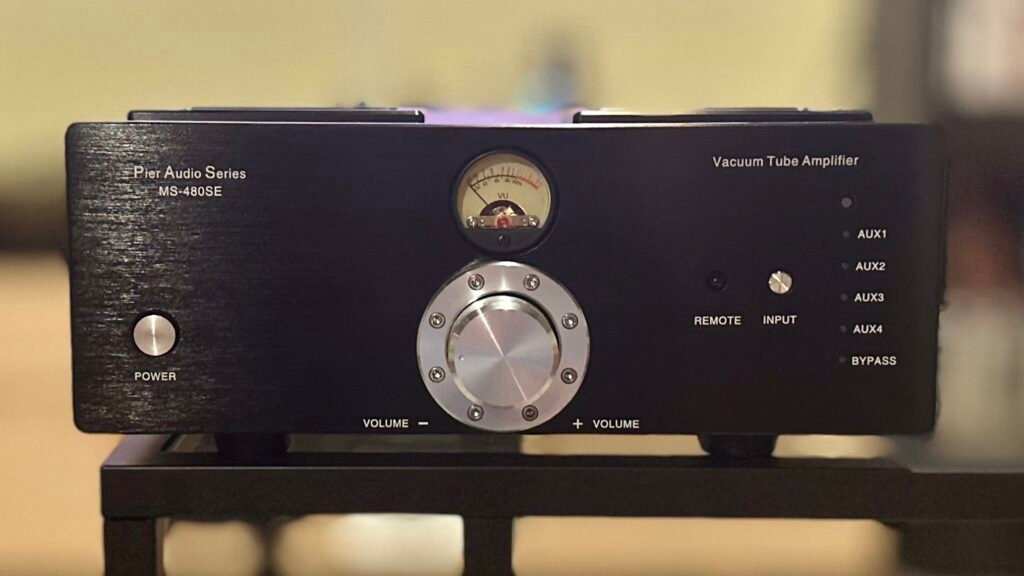
The engineer in me analyzes the Pier Audio MS-480 SE:
The Pier Audio MS-480 SE is a hybrid push-pull class AB integrated amplifier. It uses two 12AT7 and two 12AU7 tubes in the pre-amplification stage, with Toshiba bipolar transistors in the power stage. Among the internal components, Rubycon and Nichicon capacitors stand out.
There. It’s been exorcised!
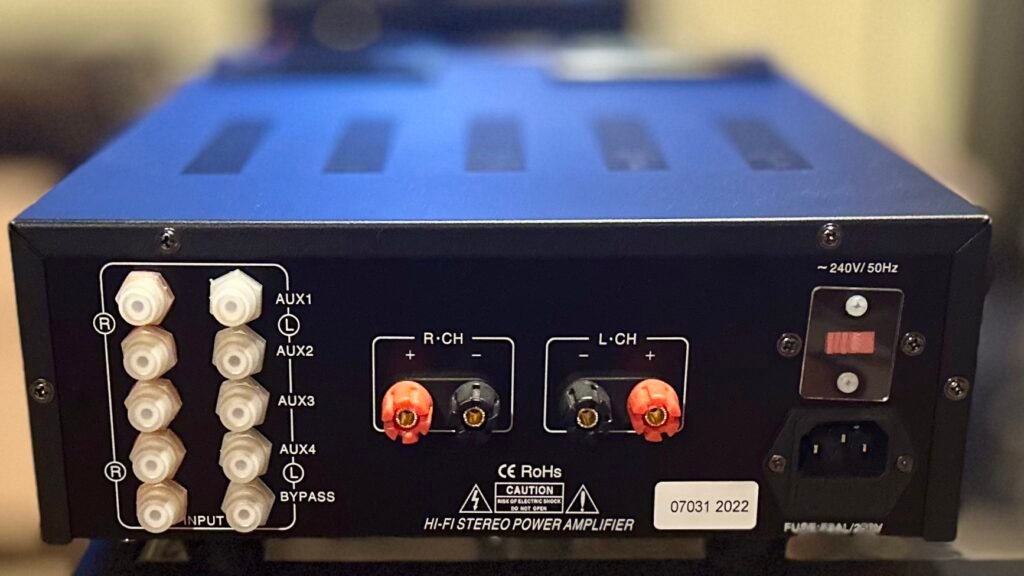
Pier Audio First Impressions, compared to the Audio Note Cobra
When I received the Pier Audio MS-480 SE for review, I still had the Audio Note Cobra, costing four times more and undoubtedly one of the best amplifiers I’ve tested. Comparison is inevitable, though unfair due to the significant price difference.
No surprises here; the Audio Note proved to be more refined, more revealing of details and nuances, with better separation between channels and instruments, and a wider and deeper soundstage than the Pier Audio. We’re talking about certain massive differences, right? Wrong! Obvious differences in a head-to-head comparison, yes. Huge differences, no.
During the MS-480 SE’s stay, I also had the opportunity to compare the Pier Audio with the Marantz Stereo 70s.
The Japanese receiver, which identifies as an integrated stereo amplifier, costs €300 less than the Pier Audio and offers many more features, adopting an all-in-one concept, while the Pier Audio is a purist amplifier.
As a purist amplifier, the Pier Audio invests all of its budget into sound quality. Thus, the French amplifier provided an experience that brought me much closer to the music compared to the Japanese all-in-one. A good way to explain this difference is that the Pier Audio allowed me to listen to music as an experience, while the Marantz, with the compromises that the all-in-one concept brings, played the music as if it were telling me the story of that precise experience.
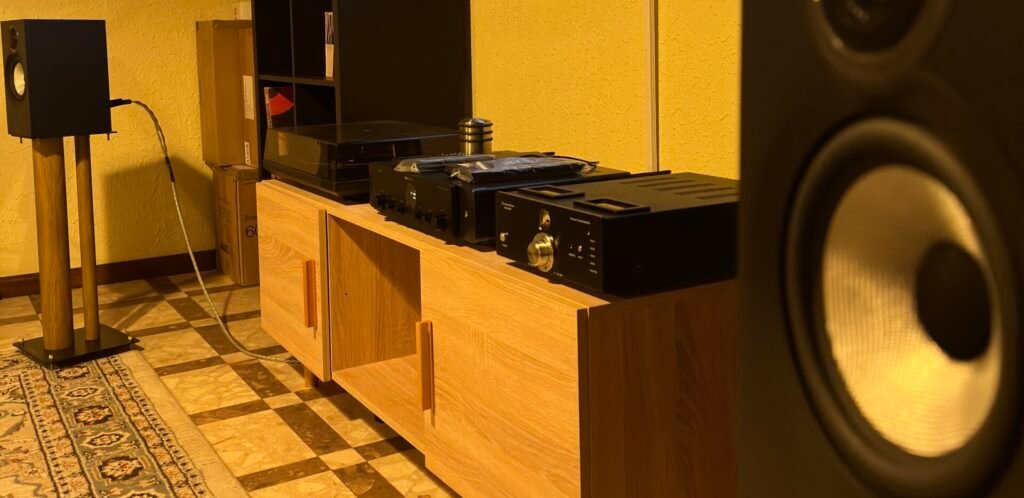
One highlight of this amplifier that I must mention is the fully aluminum remote control included, a rare feature in this price range.
During the review, I used various sources,
such as the MoFi StudioDeck turntable paired with the Rothwell Simplex phono preamp; and streamers like the Eversolo A-6 Master Edition and the Denon DNP-2000NE (you can read the head-to-head comparison between these two network players here). The combination with the Primare NP5 Prisma MkII digital transport and the Fezz Audio Equinox by Lampizator DAC was especially notable (review of the cheapest Lampizator converter on these pages soon). The most logical and balanced combination, even belonging to the same price range, seemed to be the Volumio Primo (review by MoustachesToys also very soon).
The amplifier powered the B&W 607 S3, and the Triangle Borea 03 monitor speakers, always connected with Ansuz Acoustics Speakz X2 cables.
What I Listened To
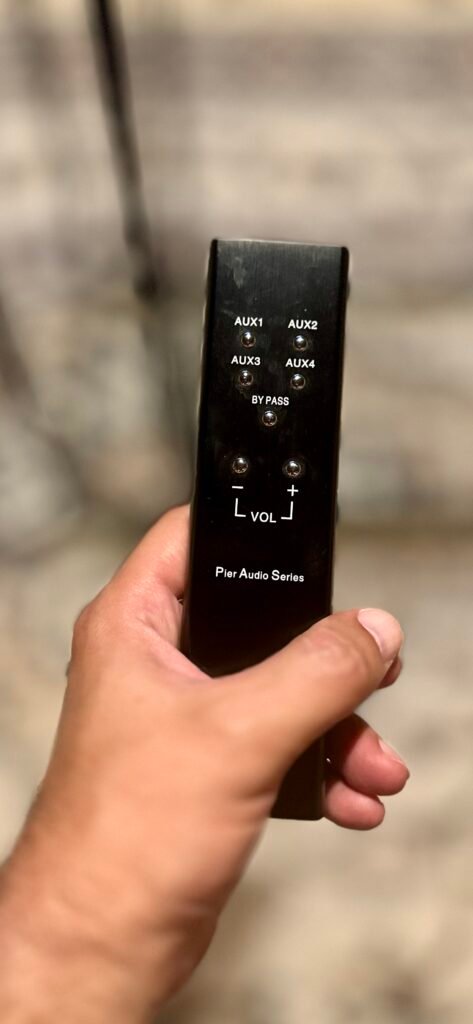
The amplifier takes about a minute to warm up the tubes. Once this ritual is completed, it’s time to enjoy. It seemed to me that the more mature the listening session, the more juice was extracted from this amplifier.
“Uninvited.” Alanis Morissette sings, “you’re not allowed. You’re uninvited.” But the Pier Audio invites me into the intense and immersive universe of this song.
“Pumpkin” mixes the sensuality of Alison Goldfrapp’s voice with Tricky’s relaxed claustrophobia. All the sexual tension contained in this song is fully conveyed by the modest Borea 03, thanks in large part to the amplifier’s mastery and personality.
Turning the needle, “Stay Away” from the album that made Nirvana a global phenomenon is also a phenomenon of intensity and aggressiveness, perfect for testing dynamic response. Top marks for dynamics. The performance is intense and gritty (like carpenter Serafim’s 60-grit sandpaper). In another track with similar characteristics, “What’s the Frequency, Kenneth” by R.E.M., with Mike Mills’ bass blending perfectly with the B&W and Pier Audio combination, but Pete Buck’s distorted guitar not so much, with the 607 S3 tweeter revealing some difficulties.
This amplifier didn’t shy away from dance music, pulling and pushing my tired skeleton to the rhythm of “U Don’t Know Me” and “The Funk Phenomena” by Armand Van Helden, and A-Trak’s remix of “Heads Will Roll” by Yeah Yeah Yeahs. “I’m Gonna Be (500 Miles)” by The Proclaimers had the same effect, despite not being a dance floor anthem. The Reid brothers’ Scottish accent is delightful!
“Uprising” made me march to the energetic and commanding rhythm imposed by Muse and the Pier Audio.
In classical music: “Lakmé/Mallika” by Delibes, to calm down. A floral duet here performed by Natalie Dessay and Delphine Haidan accompanied by the National Orchestra of the Capitole de Toulouse. The MS-480 SE reveals a surprising spectrum of beauty that invokes the typical sonic masses of Class A, while always focused on revealing the music with truthfulness and precision. The “1812 Overture” by Tchaikovsky explodes with attack, scale, and dynamics.
Holst’s “The Planets” reveals the full scale that this amplifier is capable of, with exciting sound and an effortless ability to transition from delicate filigree to the most colossal passages.
So… what’s the verdict?
The first word that comes to mind to describe this amplifier is exciting!
Modest 50W, but with dynamic and energetic bass. Sound with exceptionally fast attack, yet charming, like I imagine the Tagides, with a surprising spectrum of beauty.
I found myself listening, whenever possible, for hours on end. Was it thanks to the balance achieved between energy and smoothness?
The sound is silky and smooth, yet with enough resolution to hear differences between different sources. There is also consistency and coherence across the entire spectrum with all the sources I used.
Given the asking price for this amplifier, the sky is indeed very close for most. All things to all men.
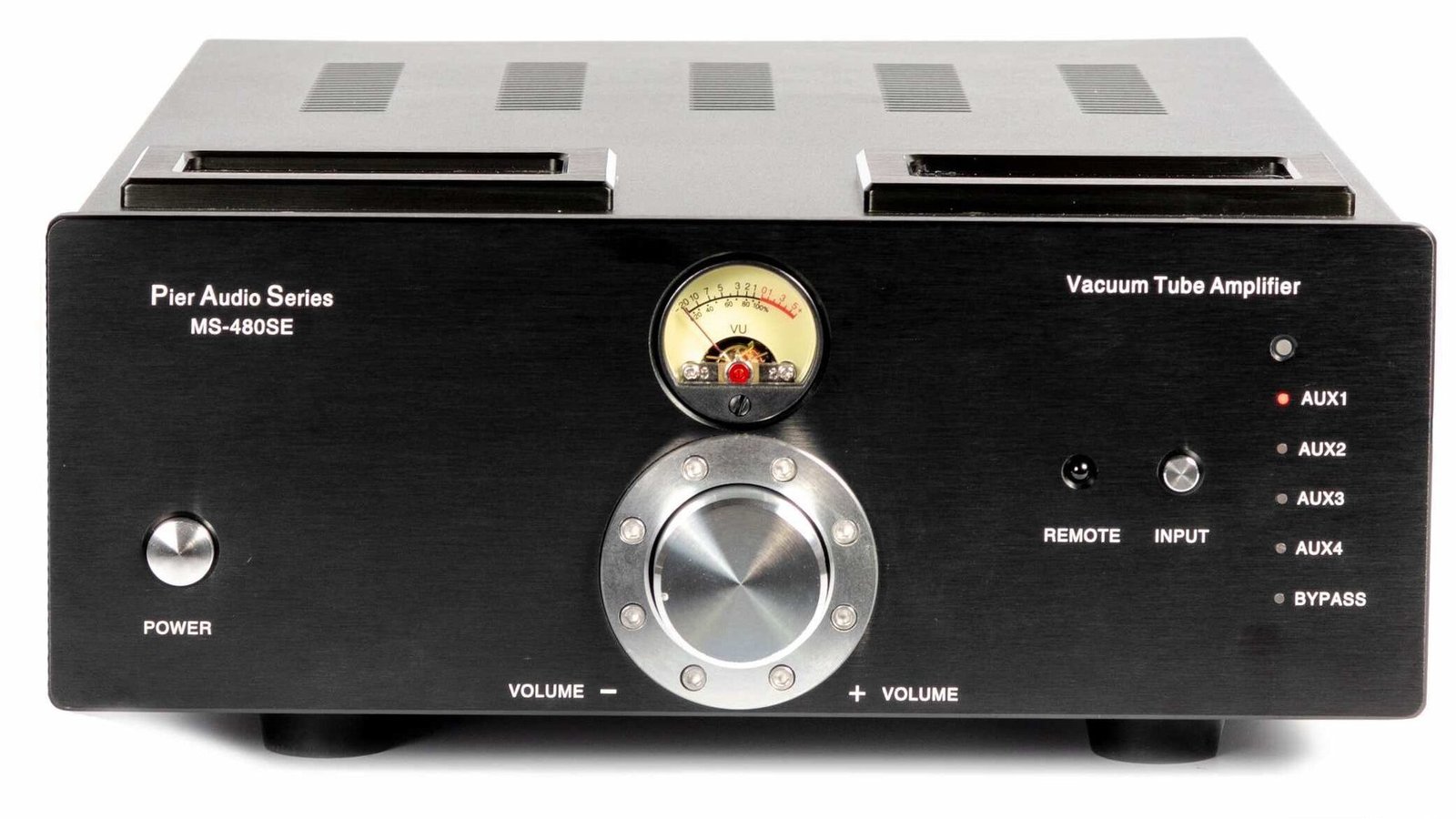
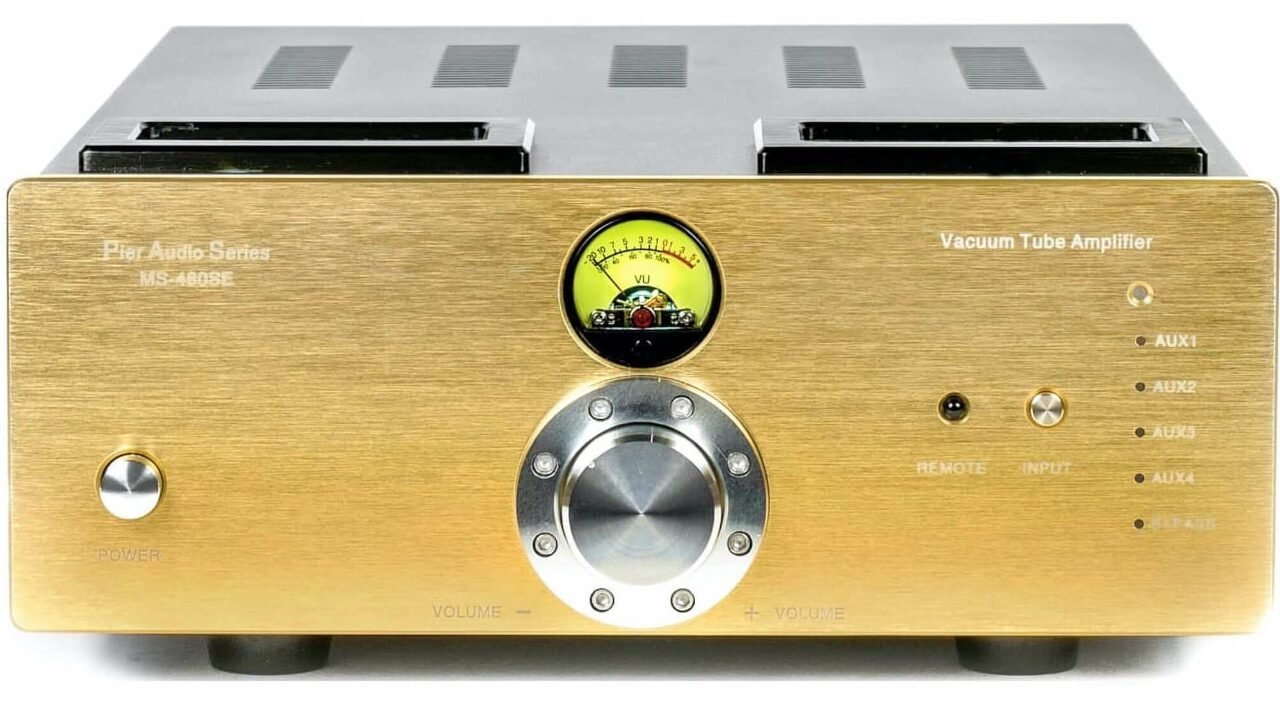
Specifications
• Power: 2 x 50W(8 ohms)
• Distortion: ≤0.10%(1kHz)
• Input sensitivity AUX 1 ~ AUX 4 ≤220 mV
• BYPASS ≤ 600 mV
• Frequency Response: AUX 1 ~ AUX 4: 5Hz – 75 kHz (-2dB)
• BYPASS: 5Hz – 35KHz (-2dB)
• Signal To Noise Ratio: ≥ 88 dB (A)
• 4 vacuum tubes: 12AT7 x 2 & 12AU7 x 2 (SRPP)
• 4 Toshiba bipolar transistors
• Remote control sources / volume
• Impedance: 4Ω – 8Ω
• Gross weight: 10,5 kg (23 Lbs)
• Dimensions: 275mm (W) x 390mm (D) x 115mm (H) – 10,8” (W) x 15,35” (D) x 4,54” (H)
• Supply capacitors Rubycon/Nichicon/Elna.
• Polypropylene electrical capacitors from Wilma and SCR (France)
Equipment used in this review:
– Pier Audio MS-480 SE, hybrid integrated amplifier (tube pre-amplification and transistor power amplification), class AB
– Audio Note Cobra, tube integrated amplifier, class A
– Marantz Stereo 70s, receiver, class AB
– Bower & Wilkins 607 S3, monitor speakers
– Triangle Borea 03, monitor speakers
– Eversolo DMP-A6 Master Edition, streamer
– Denon DNP-2000ne, streamer
– Primare NP5 Prisma MkII, streamer
– Volumio Primo, streamer
– Fezz Audio Equinox by Lampizator, DAC
– MoFi StudioDeck, turntable
– Rothwell Simplex, MM phono preamp
– Cables: Ansuz

Pingback: Accuphase E-280, With what voice! - MoustachesToys | High-End Audio Reviews & Experiences
Pingback: Volumio Primo: Is It Really Necessary to Go Further? - MoustachesToys | High-End Audio Reviews & Experiences